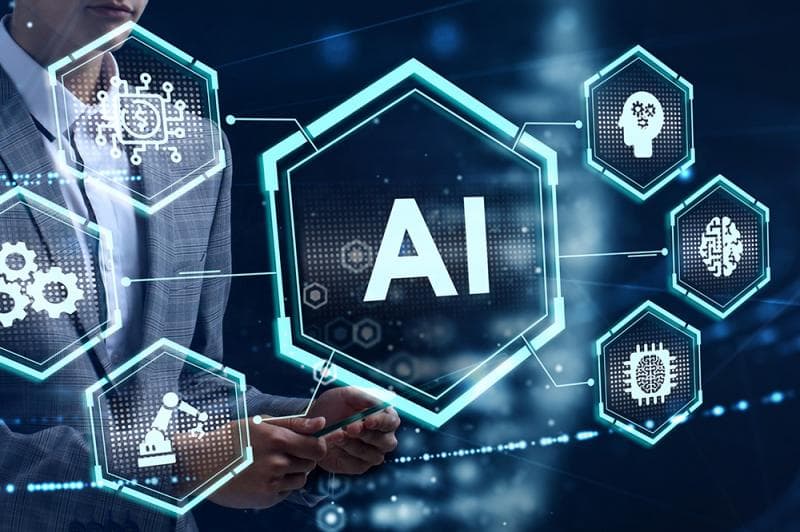AI: Revving Up the Auto Economy
Artificial intelligence is no longer a futuristic fantasy; it's the engine driving the next generation of automotive innovation, from self-driving cars to hyper-efficient manufacturing. Discover how AI is poised to revolutionize the entire auto industry, boosting productivity, enhancing safety, and ultimately creating a more sustainable and affordable future for drivers.

Automotive Technology Innovations: Reshaping the Economy
The AI Revolution in Automotive
Artificial intelligence (AI) is no longer a futuristic concept; it's rapidly transforming the automotive industry, impacting everything from design and manufacturing to the driving experience itself. AI's core strength lies in its ability to process vast amounts of data and learn from it, leading to significant advancements in several key areas.
AI in Autonomous Driving
Autonomous driving, the holy grail of automotive innovation, relies heavily on AI. Systems like Tesla's Autopilot and GM's Super Cruise utilize a combination of computer vision, deep learning, and sensor fusion (radar, lidar, ultrasonic sensors) to perceive the environment, make driving decisions, and control the vehicle. These systems leverage convolutional neural networks (CNNs) for image recognition, recurrent neural networks (RNNs) for sequence prediction (predicting the trajectory of other vehicles), and reinforcement learning for optimal decision-making. Real-world applications include adaptive cruise control, lane keeping assist, and automated parking, with fully autonomous driving still under development but progressing rapidly. Companies like Waymo are actively testing and deploying robotaxis in limited areas.
AI in Advanced Driver-Assistance Systems (ADAS)
Beyond fully autonomous driving, AI powers a range of ADAS features. These include:
- Blind-spot monitoring: AI algorithms analyze camera and sensor data to detect vehicles in blind spots.
- Emergency braking: AI can identify potential collisions and automatically apply brakes.
- Driver monitoring: AI-powered systems detect driver drowsiness or distraction and issue warnings.
- Predictive maintenance: AI analyzes vehicle data to predict potential failures, enabling proactive maintenance and reducing downtime.
Connectivity: The Connected Car
The connected car is another significant trend, enabled by advancements in telematics and 5G connectivity. Vehicles are becoming increasingly integrated with the internet, allowing for features such as over-the-air updates, remote diagnostics, infotainment systems with real-time traffic updates, and connected safety services. For instance, OnStar provides emergency services and roadside assistance through cellular connectivity. This connectivity also supports Vehicle-to-Everything (V2X) communication, enabling vehicles to communicate with each other, infrastructure (traffic lights), and pedestrians, improving safety and traffic flow.
Enhanced Safety Features
AI and connectivity are driving significant advancements in vehicle safety. Beyond the ADAS features mentioned earlier, innovations include:
- Improved airbag deployment systems: AI algorithms analyze crash dynamics to optimize airbag deployment.
- Advanced seatbelt systems: Systems that adjust tightness based on crash severity.
- Pedestrian detection and avoidance: AI-powered systems detect pedestrians and automatically brake to avoid collisions.
Future Automotive Technologies
The future of automotive technology promises even more significant advancements:
- Solid-state batteries: Offering higher energy density, faster charging, and improved safety.
- Advanced materials: Lighter and stronger materials like carbon fiber composites will improve fuel efficiency and safety.
- Human-machine interfaces (HMI): More intuitive and seamless integration of driver and vehicle through natural language processing and gesture control.
- Biometric authentication: Enhancing security and personalization through fingerprint or facial recognition.
AI's Impact on the National Economy
The automotive industry's transformation driven by AI will have a profound impact on a nation's economy. This includes:
- Job creation: New roles in AI development, data science, software engineering, and autonomous vehicle operation will emerge.
- Increased productivity: Automation in manufacturing and logistics will improve efficiency.
- Economic growth: Investment in research and development, along with the creation of new products and services, will stimulate economic growth.
- Improved safety: Reduced accidents will lower healthcare costs and increase productivity.
- New infrastructure: Investment in charging stations and smart city infrastructure will create jobs and stimulate economic activity.
However, challenges remain. The transition to AI-driven automotive technology requires significant investment in infrastructure, workforce training, and addressing potential job displacement in traditional manufacturing roles. Careful planning and policy initiatives are crucial to ensure a smooth and equitable transition, maximizing the economic benefits while mitigating potential negative impacts.